Abstract
The investigation, epidemiology, and effectiveness of control procedures during an outbreak of Legionnaires' disease involving three immunosuppressed patients are described. The source of infection appeared to be a network of fire hydrant spurs connected directly to the incoming hospital mains water supply. Removal of these hydrants considerably reduced, but failed to eliminate, contamination of water storage facilities. As an emergency control procedure the incoming mains water was chlorinated continuously. Additional modifications to improve temperature regulation and reduce stagnation also failed to eliminate the legionellae. A perspex test-rig was constructed to model the pre-existing hospital water supply and storage system. This showed that through the hydraulic mechanism known as 'temperature buoyancy', contaminated water could be efficiently and quickly exchanged between a stagnant spur pipe and its mains supply. Contamination of hospital storage tanks from such sources has not previously been considered a risk factor for Legionnaires' disease. We recommend that hospital water storage tanks are supplied by a dedicated mains pipe without spurs.
Full text
PDF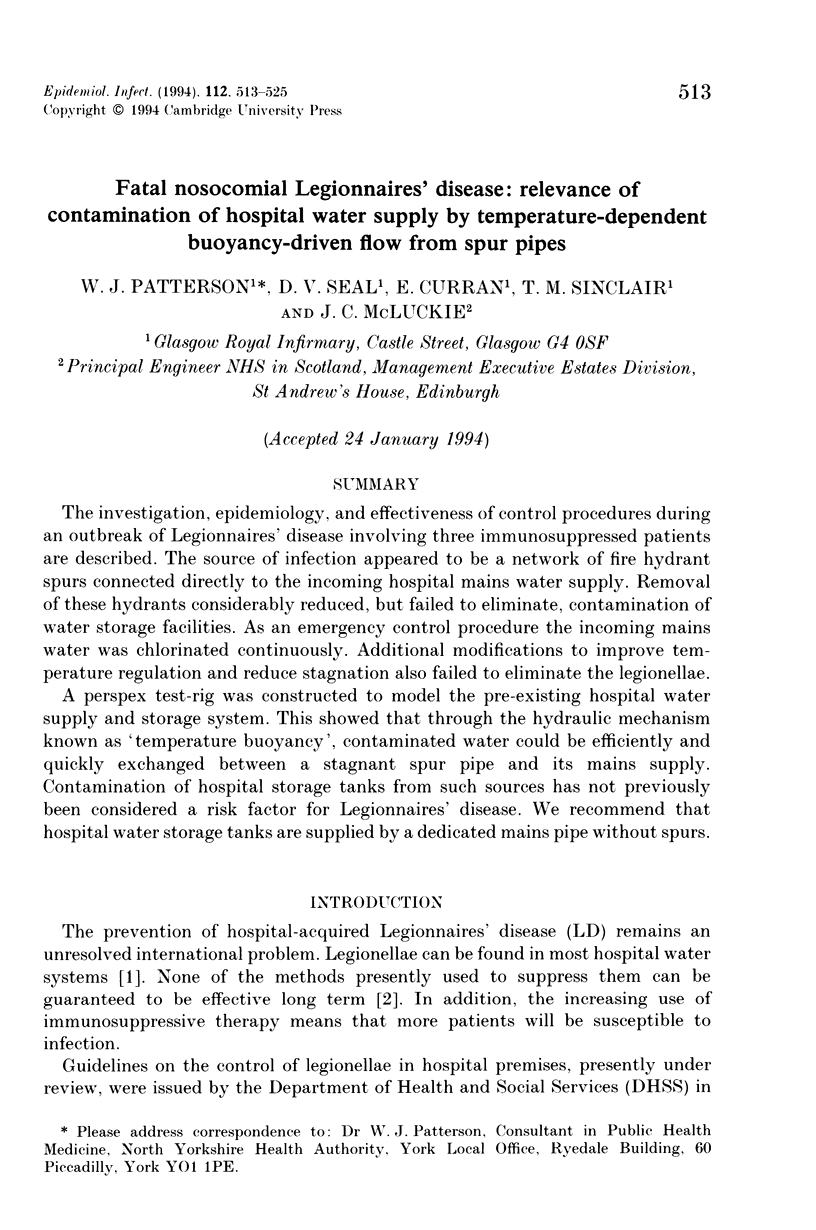
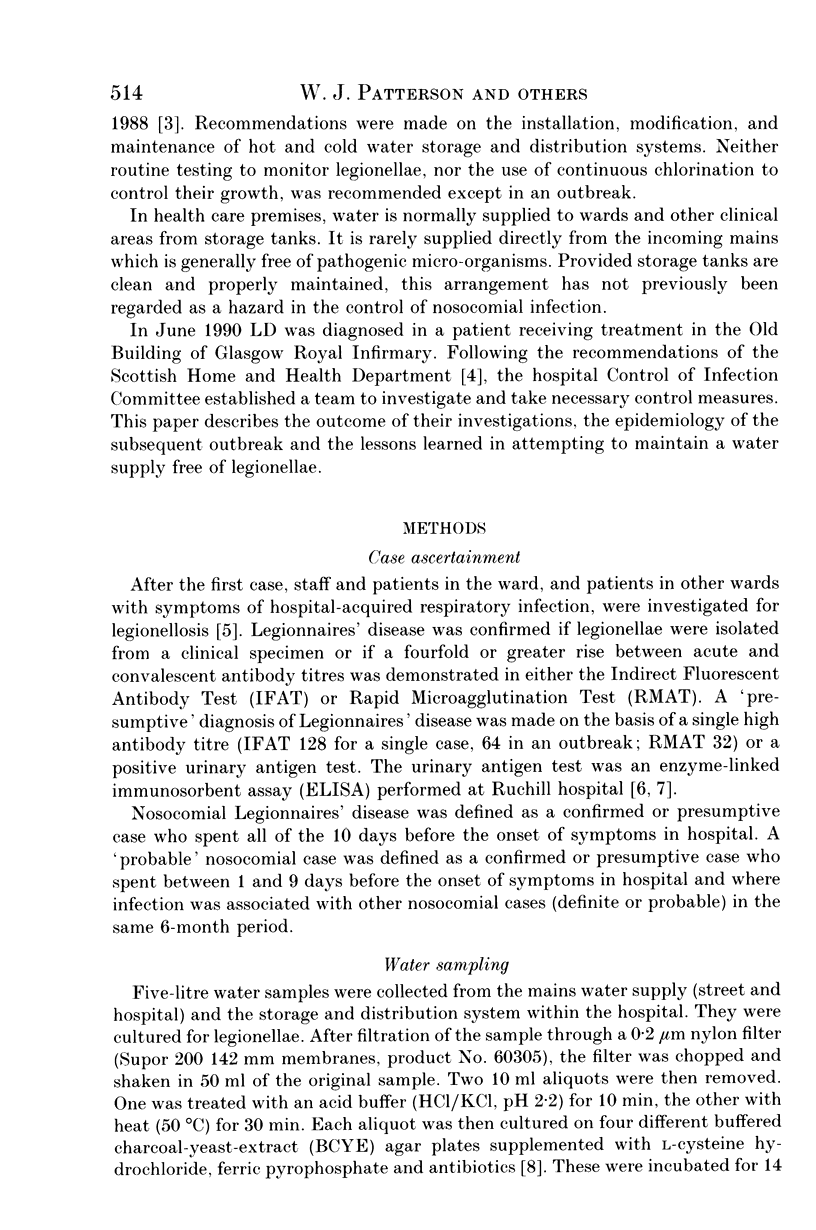
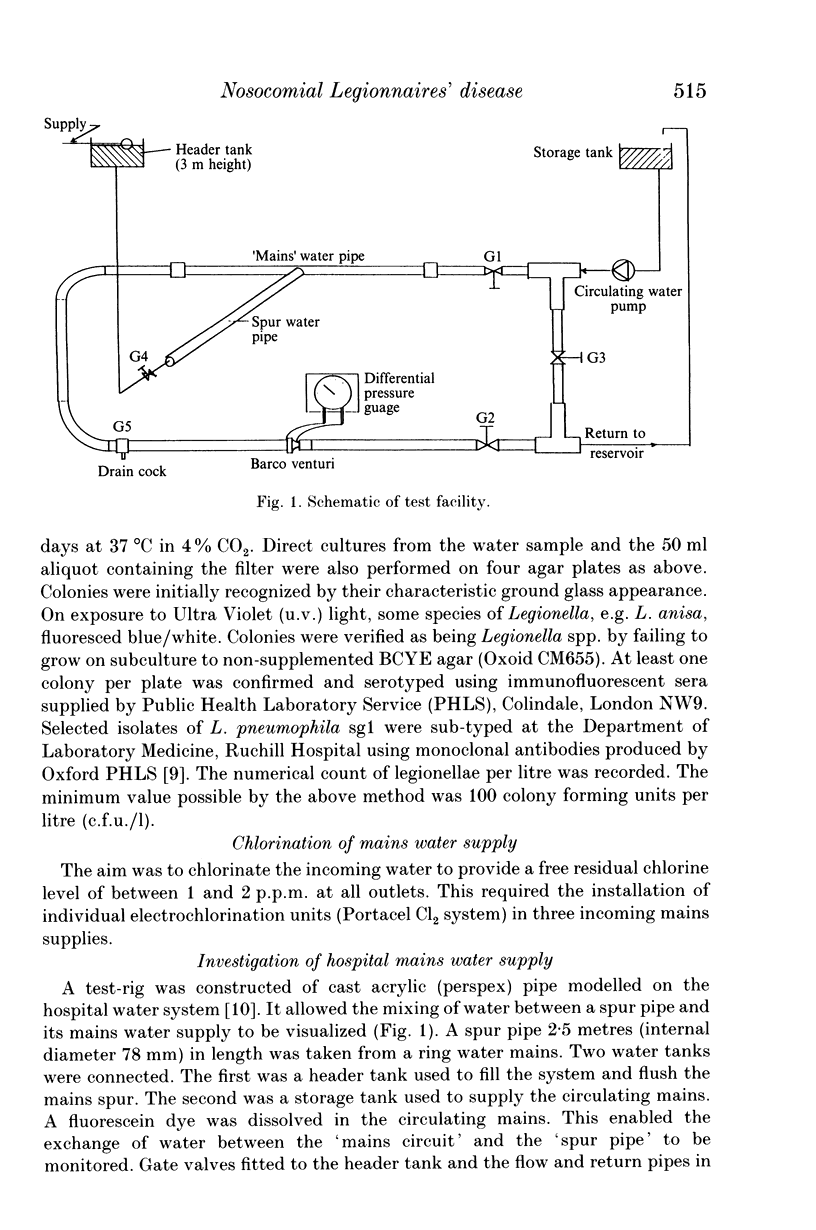
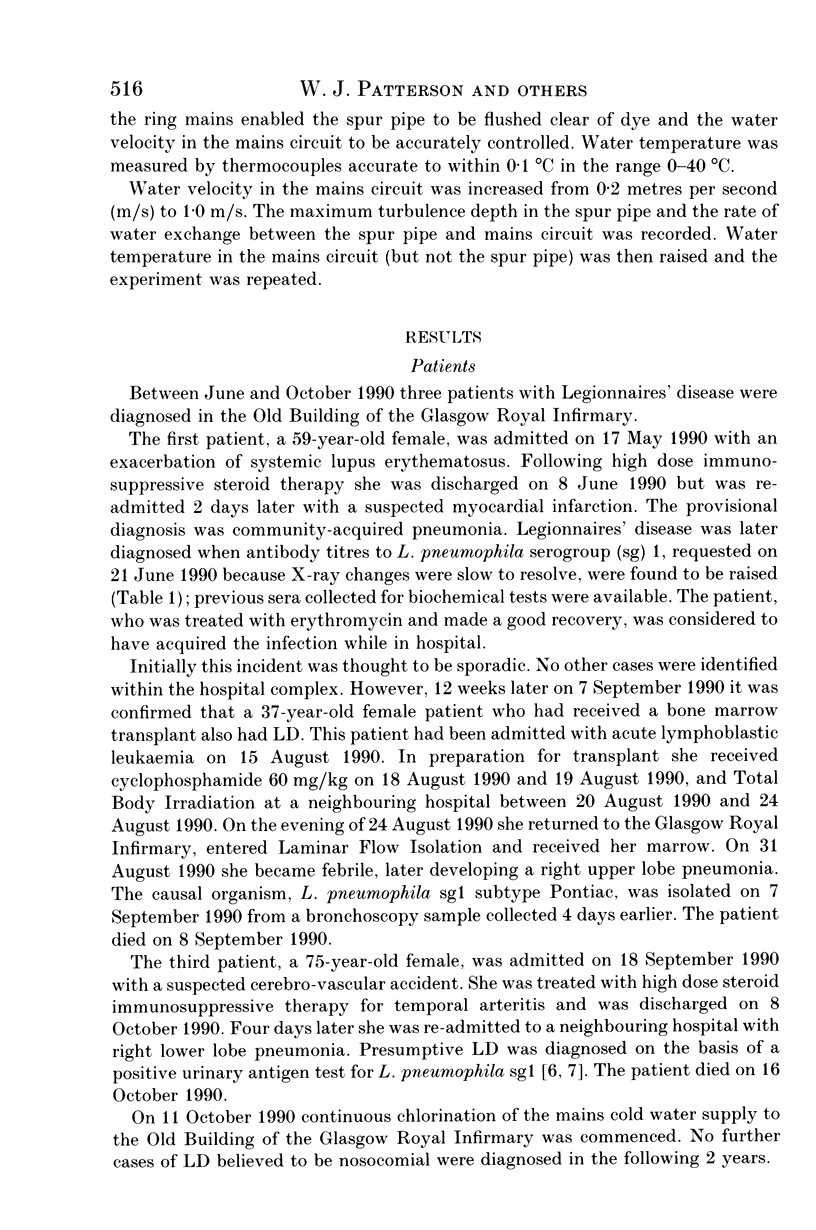
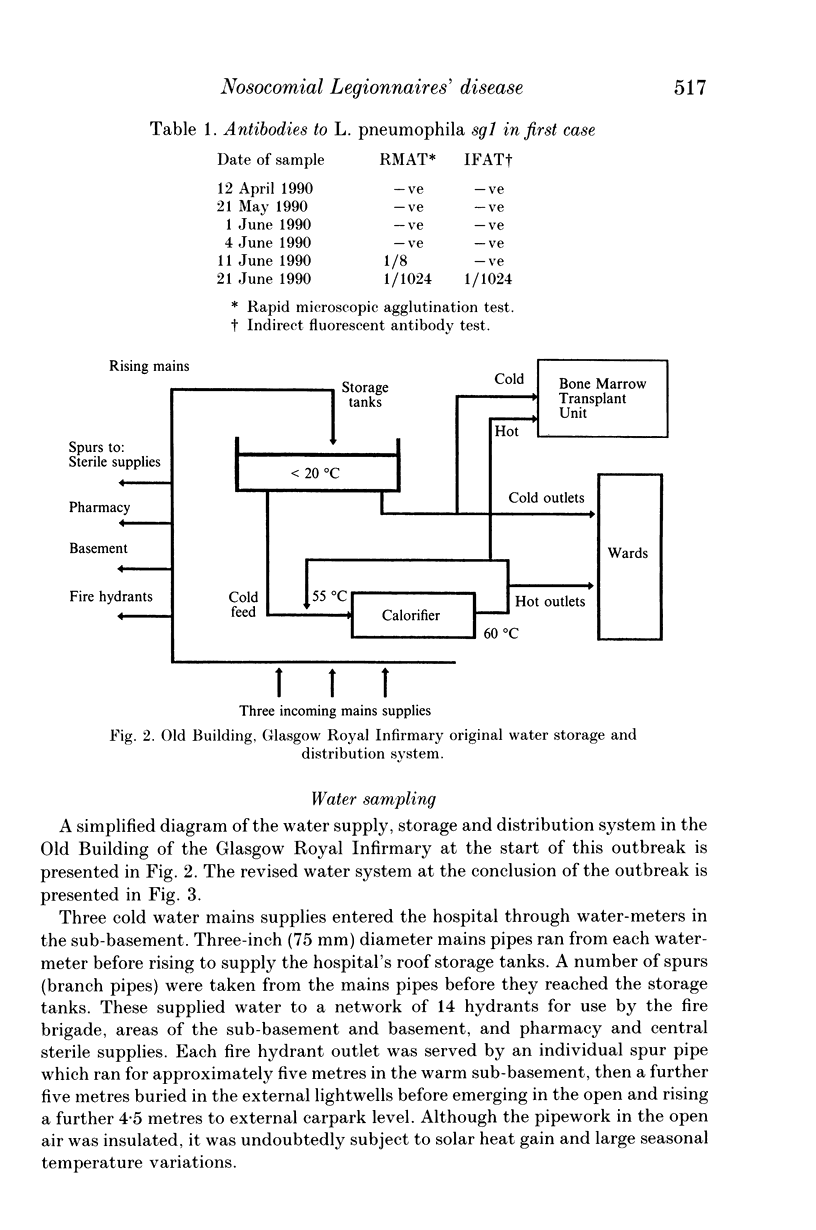
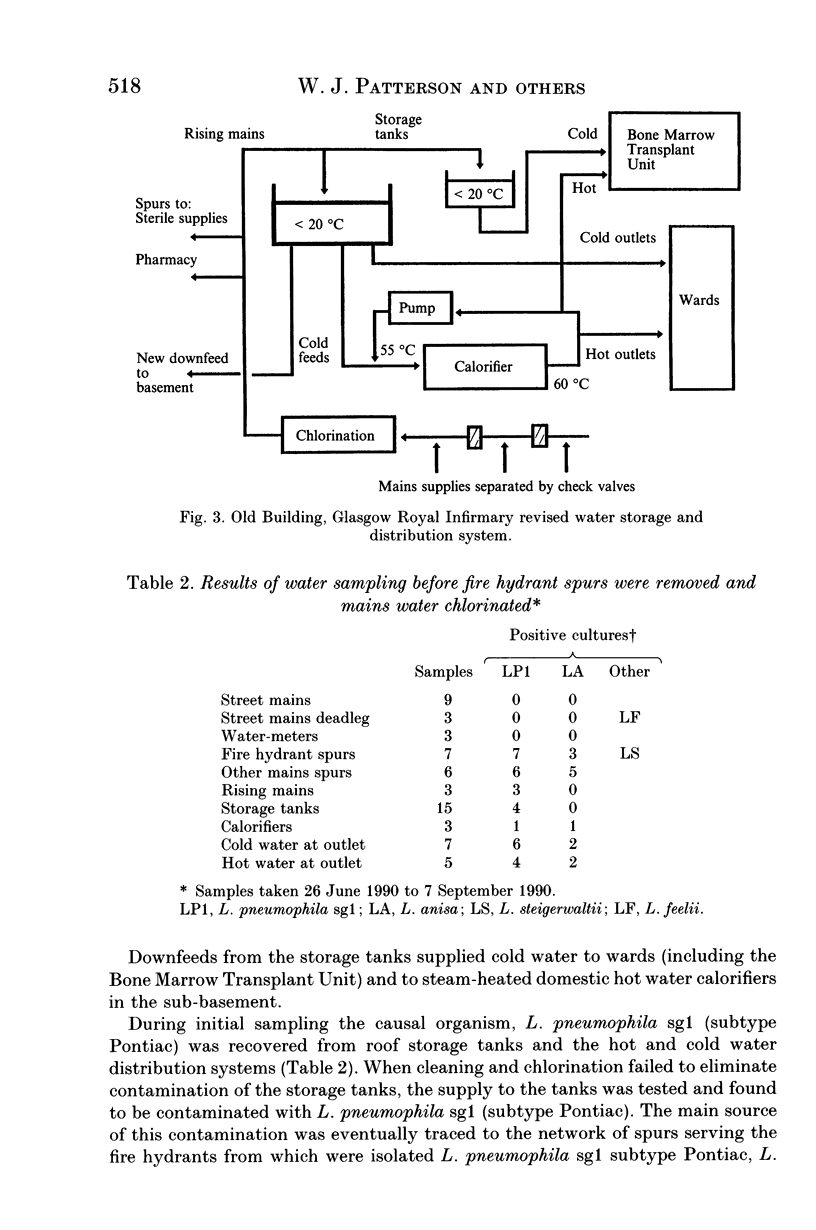
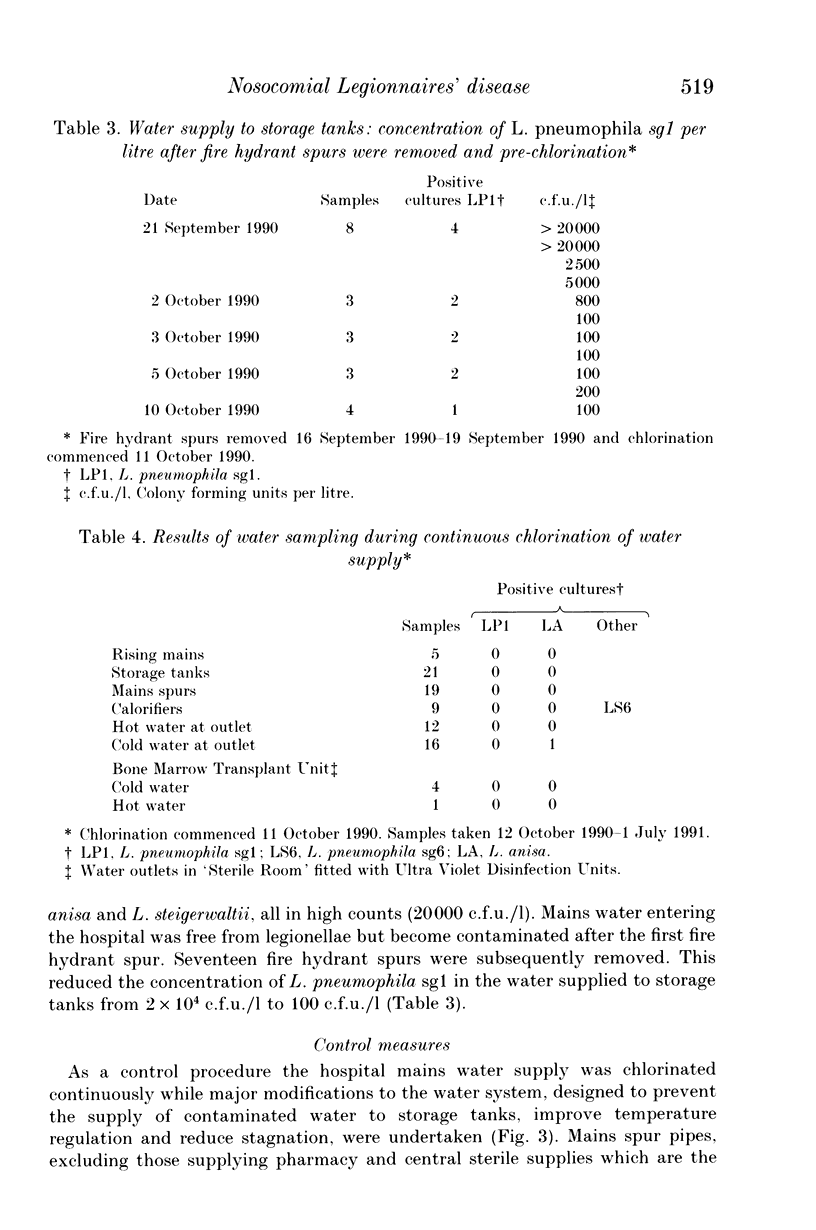

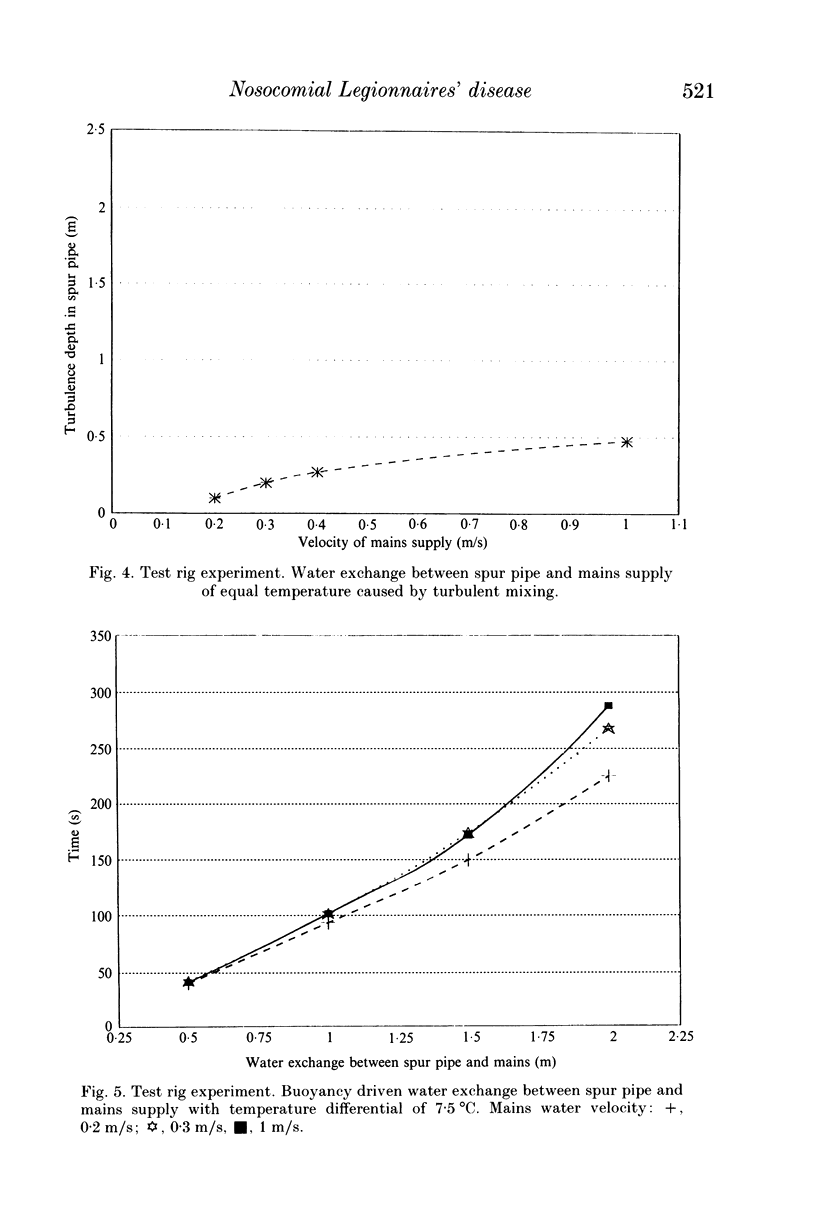

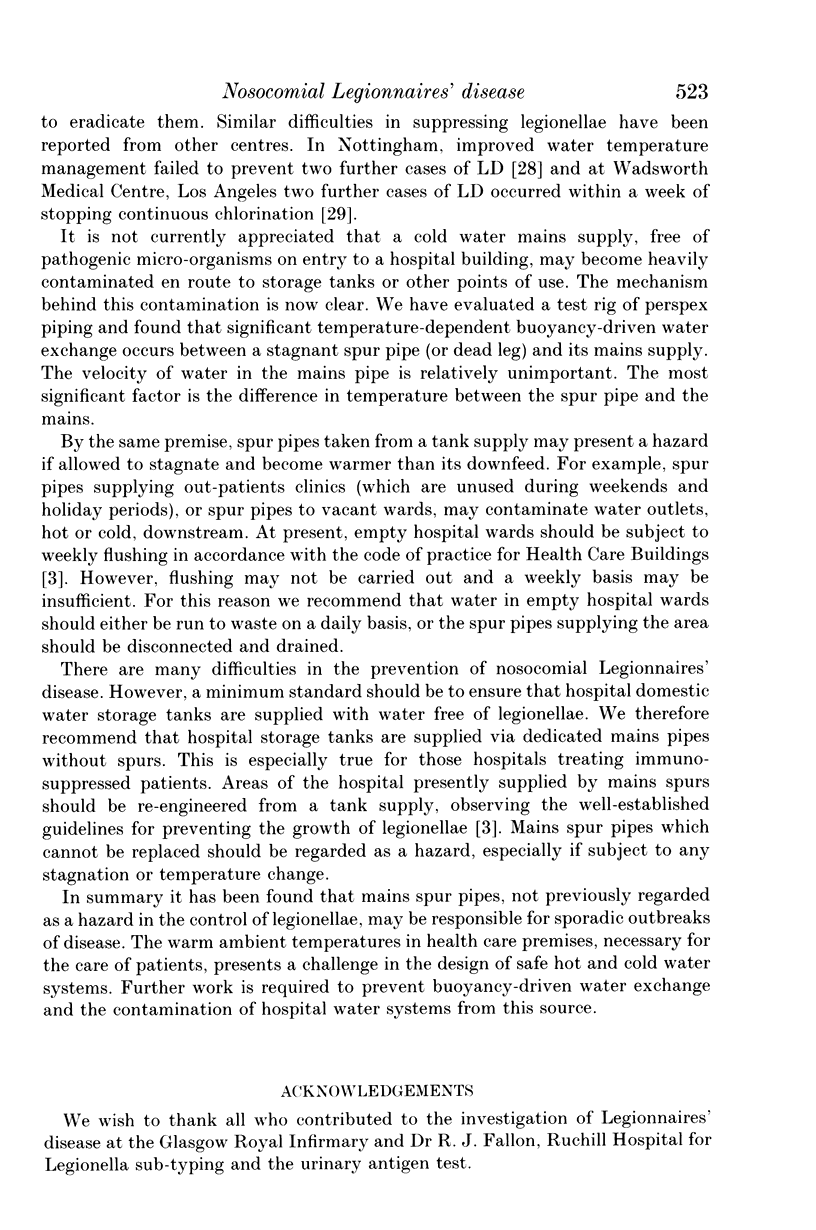
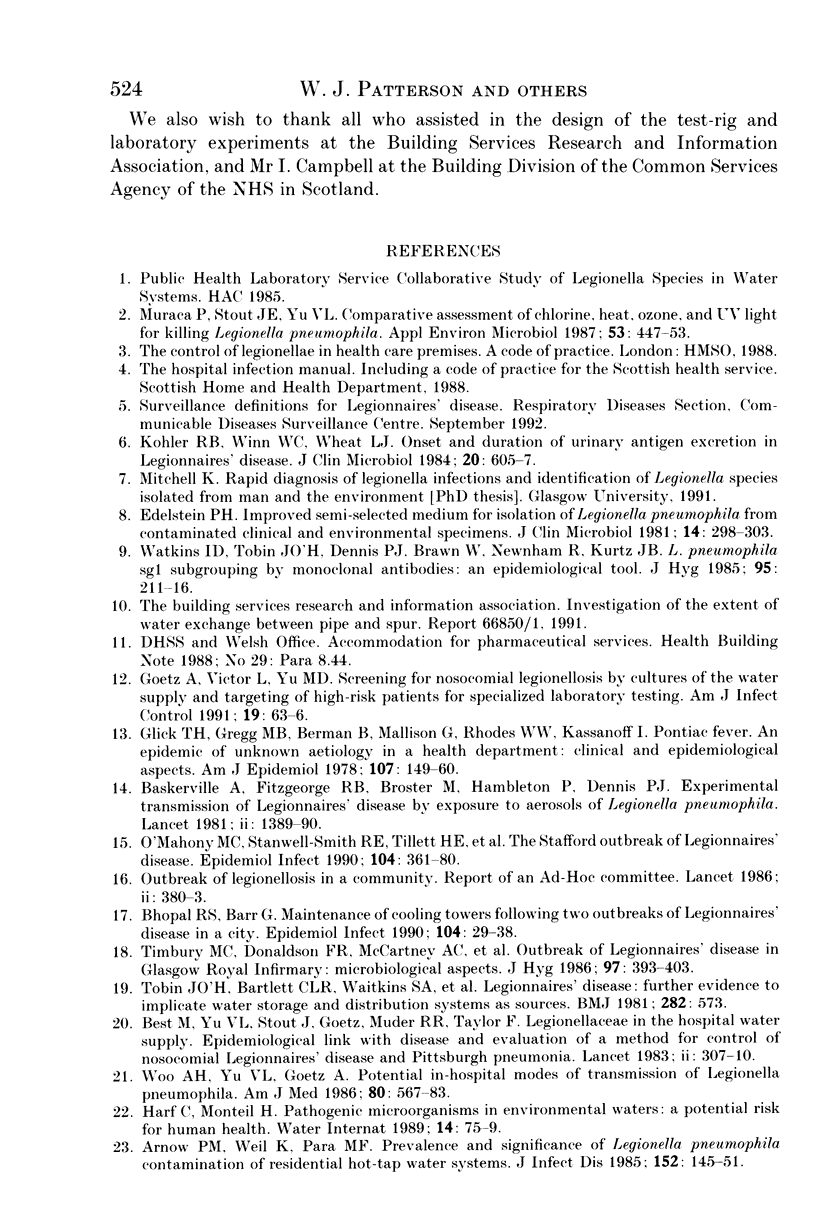

Selected References
These references are in PubMed. This may not be the complete list of references from this article.
- Arnow P. M., Weil D., Para M. F. Prevalence and significance of Legionella pneumophila contamination of residential hot-tap water systems. J Infect Dis. 1985 Jul;152(1):145–151. doi: 10.1093/infdis/152.1.145. [DOI] [PubMed] [Google Scholar]
- Baskerville A., Fitzgeorge R. B., Broster M., Hambleton P., Dennis P. J. Experimental transmission of legionnaires' disease by exposure to aerosols of Legionella pneumophila. Lancet. 1981 Dec 19;2(8260-61):1389–1390. doi: 10.1016/s0140-6736(81)92803-8. [DOI] [PubMed] [Google Scholar]
- Best M., Yu V. L., Stout J., Goetz A., Muder R. R., Taylor F. Legionellaceae in the hospital water-supply. Epidemiological link with disease and evaluation of a method for control of nosocomial legionnaires' disease and Pittsburgh pneumonia. Lancet. 1983 Aug 6;2(8345):307–310. doi: 10.1016/s0140-6736(83)90290-8. [DOI] [PubMed] [Google Scholar]
- Bhopal R. S., Barr G. Maintenance of cooling towers following two outbreaks of Legionnaires' disease in a city. Epidemiol Infect. 1990 Feb;104(1):29–38. doi: 10.1017/s0950268800054492. [DOI] [PMC free article] [PubMed] [Google Scholar]
- Colville A., Crowley J., Dearden D., Slack R. C., Lee J. V. Outbreak of Legionnaires' disease at University Hospital, Nottingham. Epidemiology, microbiology and control. Epidemiol Infect. 1993 Feb;110(1):105–116. doi: 10.1017/s0950268800050731. [DOI] [PMC free article] [PubMed] [Google Scholar]
- Edelstein P. H. Control of Legionella in hospitals. J Hosp Infect. 1986 Sep;8(2):109–115. doi: 10.1016/0195-6701(86)90037-x. [DOI] [PubMed] [Google Scholar]
- Edelstein P. H. Improved semiselective medium for isolation of Legionella pneumophila from contaminated clinical and environmental specimens. J Clin Microbiol. 1981 Sep;14(3):298–303. doi: 10.1128/jcm.14.3.298-303.1981. [DOI] [PMC free article] [PubMed] [Google Scholar]
- Glick T. H., Gregg M. B., Berman B., Mallison G., Rhodes W. W., Jr, Kassanoff I. Pontiac fever. An epidemic of unknown etiology in a health department: I. Clinical and epidemiologic aspects. Am J Epidemiol. 1978 Feb;107(2):149–160. doi: 10.1093/oxfordjournals.aje.a112517. [DOI] [PubMed] [Google Scholar]
- Goetz A., Yu V. L. Screening for nosocomial legionellosis by culture of the water supply and targeting of high-risk patients for specialized laboratory testing. Am J Infect Control. 1991 Apr;19(2):63–66. doi: 10.1016/0196-6553(91)90040-j. [DOI] [PubMed] [Google Scholar]
- Kohler R. B., Winn W. C., Jr, Wheat L. J. Onset and duration of urinary antigen excretion in Legionnaires disease. J Clin Microbiol. 1984 Oct;20(4):605–607. doi: 10.1128/jcm.20.4.605-607.1984. [DOI] [PMC free article] [PubMed] [Google Scholar]
- Muraca P., Stout J. E., Yu V. L. Comparative assessment of chlorine, heat, ozone, and UV light for killing Legionella pneumophila within a model plumbing system. Appl Environ Microbiol. 1987 Feb;53(2):447–453. doi: 10.1128/aem.53.2.447-453.1987. [DOI] [PMC free article] [PubMed] [Google Scholar]
- O'Mahony M. C., Stanwell-Smith R. E., Tillett H. E., Harper D., Hutchison J. G., Farrell I. D., Hutchinson D. N., Lee J. V., Dennis P. J., Duggal H. V. The Stafford outbreak of Legionnaires' disease. Epidemiol Infect. 1990 Jun;104(3):361–380. doi: 10.1017/s0950268800047385. [DOI] [PMC free article] [PubMed] [Google Scholar]
- Stout J. E., Yu V. L., Best M. G. Ecology of Legionella pneumophila within water distribution systems. Appl Environ Microbiol. 1985 Jan;49(1):221–228. doi: 10.1128/aem.49.1.221-228.1985. [DOI] [PMC free article] [PubMed] [Google Scholar]
- Stout J. E., Yu V. L., Yee Y. C., Vaccarello S., Diven W., Lee T. C. Legionella pneumophila in residential water supplies: environmental surveillance with clinical assessment for Legionnaires' disease. Epidemiol Infect. 1992 Aug;109(1):49–57. [PMC free article] [PubMed] [Google Scholar]
- Timbury M. C., Donaldson J. R., McCartney A. C., Fallon R. J., Sleigh J. D., Lyon D., Orange G. V., Baird D. R., Winter J., Wilson T. S. Outbreak of Legionnaires' disease in Glasgow Royal Infirmary: microbiological aspects. J Hyg (Lond) 1986 Dec;97(3):393–403. doi: 10.1017/s0022172400063580. [DOI] [PMC free article] [PubMed] [Google Scholar]
- Tobin J. O., Bartlett C. L., Waitkins S. A., Barrow G. I., Macrae A. D., Taylor A. G., Fallon R. J., Lynch F. R. Legionnaires' disease: further evidence to implicate water storage and distribution systems as sources. Br Med J (Clin Res Ed) 1981 Feb 14;282(6263):573–573. doi: 10.1136/bmj.282.6263.573. [DOI] [PMC free article] [PubMed] [Google Scholar]
- Tobin J. O., Swann R. A., Bartlett C. L. Isolation of Legionella pneumophila from water systems: methods and preliminary results. Br Med J (Clin Res Ed) 1981 Feb 14;282(6263):515–517. doi: 10.1136/bmj.282.6263.515. [DOI] [PMC free article] [PubMed] [Google Scholar]
- Watkins I. D., Tobin J. O., Dennis P. J., Brown W., Newnham R., Kurtz J. B. Legionella pneumophila serogroup 1 subgrouping by monoclonal antibodies--an epidemiological tool. J Hyg (Lond) 1985 Oct;95(2):211–216. doi: 10.1017/s0022172400062641. [DOI] [PMC free article] [PubMed] [Google Scholar]
- Woo A. H., Yu V. L., Goetz A. Potential in-hospital modes of transmission of Legionella pneumophila. Demonstration experiments for dissemination by showers, humidifiers, and rinsing of ventilation bag apparatus. Am J Med. 1986 Apr;80(4):567–573. doi: 10.1016/0002-9343(86)90809-0. [DOI] [PubMed] [Google Scholar]


